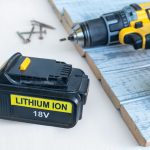A primer on the basics of continuous insulation
In the early 1990s, when the steel industry made a strong play to bring light-gauge steel framing to residential construction, it was met, understandably, by strong resistance from the lumber manufacturers, framing trades and tradition- oriented home builders who were concerned about performance and warranty. At the time, one of the most commonly expressed concerns by structural engineers debating the issue was the problem of thermal bridging.
It was almost impossible to attend a seminar during that time without seeing a photo of a steelframed home that didn’t present the telltale signs of thermal bridging. Condensation buildups along framing members that showed as darkened areas where the moisture had attracted dirt. It was a powerful argument, but one easily overcome by a continuous insulation system.
The same kind of problem has held true in the structural steel building industry. The culprit? As everyone knows, steel is a pretty good conductor of heat. Its R-value is incredibly low, and while it has traditionally been believed that the area of a wall or ceiling bridged by steel is so small that the overall loss of heat is relatively minor, recent research has shown that’s not true. For light-gauge steel framing or structural steel framing.
According to one source, if the bridging of steel in a wall is equal to less than one-tenth or 1 percent of the total wall area, it will allow more heat to flow through that small surface area than the entire rest of the wall. Oak Ridge National Laboratory looked at thermal bridging in light-gauge steel framing and discovered the thermal bridging through steel framing can reduce a wall thermal performance by 55 percent.

1. Break the Bridge
There are several ways to break the bridge across a steel framing member:
• Insulated sheathing
• Design and install distance spacers that place an air barrier between the framing and the exterior sheathing
• Add a reflective surface to the space so the air barrier has an increased R-value
• Alternate framing members to provide a break
• Spray foam on the framing members
All of those decisions require the full involvement of the design team to ensure the best results occur with the least cost. Every building can be insulated to extreme levels but the point of return on investment for that effort can be reached relatively quickly. Perhaps the quickest, simplest and easiest way to improve thermal performance of walls and ceilings at the most cost-effective price can be achieved with continuous insulation products, typically with rigid foam or a combination product, such as insulated metal panels.
Perhaps the quickest, simplest and easiest way to improve thermal performance of walls and ceilings at the most cost-effective price can be achieved with continuous insulation products, typically with rigid foam or a combination product, such as insulated metal panels.
2. Types of Foam Insulation
There are three kinds of insulated sheathing available: expanded polystyrene (EPS), extruded polystyrene (XPS) and polyisocyanurate
(Polyiso).
EPS is manufactured by expanding polystyrene beads to fill a form. Thermal resistance, structural strength and vapor resistance can be varied depending on the density of the beads. XPS is made by extruding a mixture of molten polysterene and a blowing agent through a die at high temperatures. Polyiso is commercially available and is generally made up of polyurethane foam modified with polyisocaynurate. The blend increases the fire resistance while maintaining R-values and strength.

3. Add the Space
Most metal buildings are constructed with batt insulation draped over the framing members, and then metal panels attached. The panels compress the insulation, reducing its effectiveness and the fasteners provide a short cut to the thermal bridge. Consequently, a wall designed to achieve an R-19 value can have an effective value of R-14.
Placing a thermal block on the framing member prior to installing panels allows the wall to retain its full rating and prevent the short cut caused by fasteners.
4. International Energy Conversation Code Requirements
Published by the International Code Council, the following R-value requirements for walls include both cavity insulation and continuous insulation requirements. (See the chart at the bottom of the page.)
The U.S. Department of Energy posts climate zone maps that set the requirements for areas of the country. (See the map on previous page.)
5. It’s about Moisture as well as Energy
One of the biggest dangers to any building is the potential for moisture build-up within the walls. The defining factor is dew point, which is the temperature at which water vapor condenses. It works like this: Warm air can hold more moisture than cold air. If the interior of a building is warm and the exterior is cold, there is a progression of temperatures through the wall. At some point, the interior’s warm, moist air meets the exterior’s cold, dry air and the moisture is released. That’s the dew point. Everybody has seen this in the condensation that occurs inside windows on winter days. The worst thing that can happen is if that release of moisture occurs inside the building.
There are two ways to prevent this. One is to install enough insulation so that the dew point occurs outside the wall and the other is to use vapor barriers that prevent the moisture in the warm air from passing into the wall. Both are necessary.
Continuous insulation with facing material is a convenient and easy way to construct a vapor barrier, prevent a thermal bridge
(another way to get a dew point inside a wall) and add enough R-value so the building envelope works efficiently.
6. Insulation Facing
Facings come in different varieties with different advantages. Foil facing, for example, will help reduce heat conductivity. Kraft paper facing is commonly used for batt insulation and works well for increasing the permeability rating on vapor infiltration. The importance of facing extends beyond just moisture control and heat conductivity. In sports-oriented buildings, often constructed using metal building systems, a fiberglass and polyester blend facing will prevent the insulation from being punctured by sharp and blunt objects. Think of that necessity when aggressive teenage soccer players misfire with a hard shot or throw a water bottle in frustration.
Perhaps one of the facings that is getting the most attention in continuous insulation is foil facing, which is used as a radiant barrier, predominantly in cool roof applications.
7. Radiant Barriers
Radiant barriers are necessary primarily in hot climates where direct sunlight strikes a surface and heats it. The heat transfers through the roof system and radiates into the space, either attic or open space. A radiant barrier reduces the heat transfer and is affect by three factors: emissivity, reflectivity and the angle of the surface.
Radiant barriers need a low emissivity (the amount of heat being emitted by the surface) and high reflectivity (the amount of heat bouncing off the surface).
Studies have shown that radiant barriers can reduce cooling costs between 5 and 10 percent in warm climates. In cool climates, it makes more sense to increase the level of insulation rather than installing a radiant barrier.





